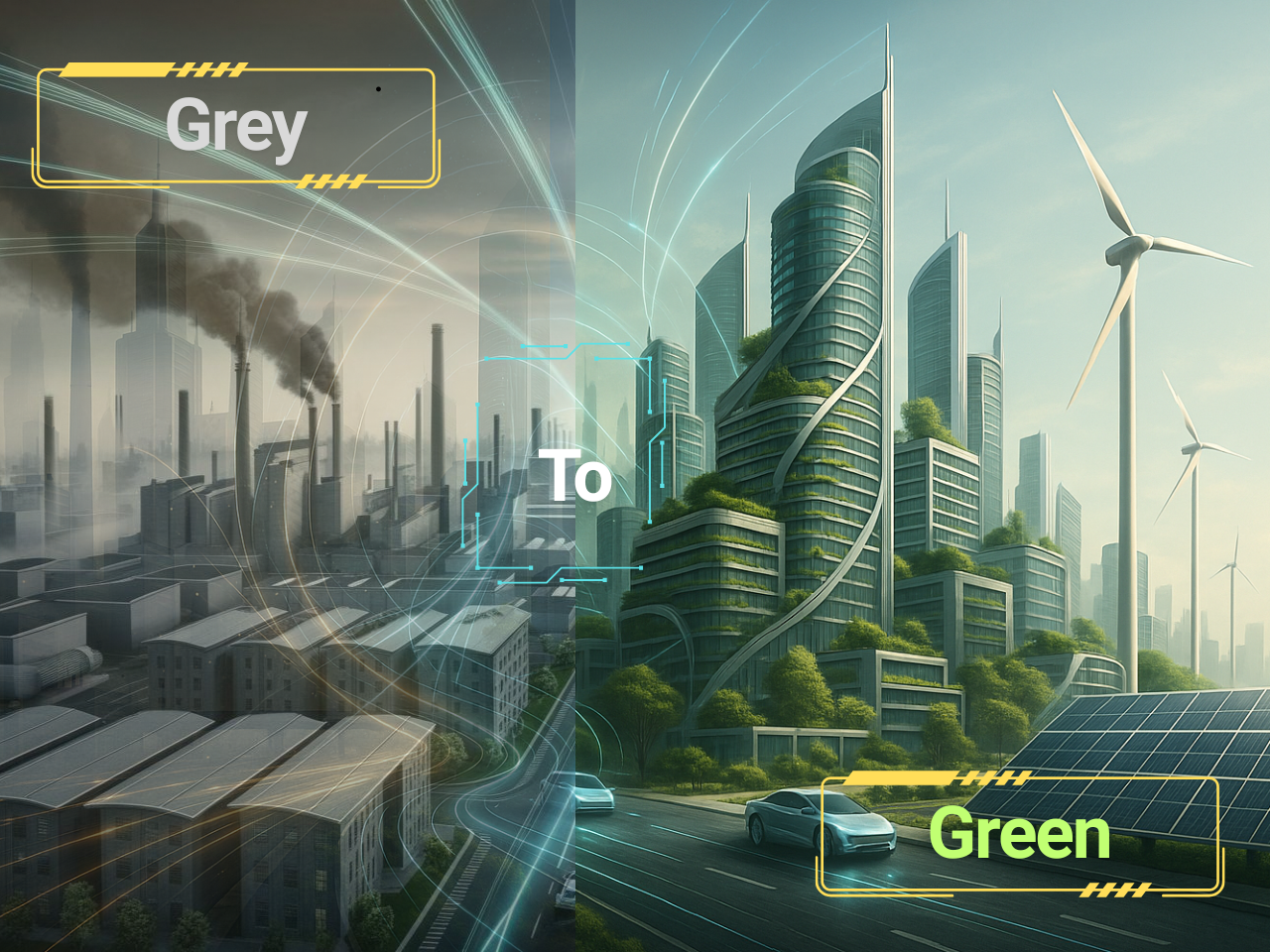Grey to Green: The Global Race to Decarbonize Cities
Cities are responsible for a significant portion of global emissions, accounting for approximately 70–75%. As such, they are now at the forefront of a profound global shift towards clean energy. This transition presents transformative opportunities for those who understand and strategically engage with urban decarbonization.
The Urban Shift in Global Clean Energy Transformation
The C40 Cities Climate Leadership Group—a network of nearly 100 cities—is leading this charge, placing climate action at the heart of urban policy. By deploying scalable technologies with global applicability, urban centres can reshape the future of sustainable development and emerge as hubs of innovation in the clean energy movement. It is important to note that emissions from cities are unevenly distributed. A small number of mega-cities contribute a disproportionately large share. These cities are now taking the lead in driving significant change, and their actions will influence the trajectory of global urban decarbonization.
A New Era for Urban Development
The global shift towards cleaner, more sustainable urban environments is not just a response to climate challenges—it represents a fundamental restructuring of urban systems and markets. From Germany's sustainable building technologies to California's commitment to electric vehicles, there is a clear global movement toward reducing emissions, improving air quality, and embracing a sustainable future. These transformations are opening new pathways for cities, encouraging international cooperation, technological innovation, and sustainable urban planning on a global scale.
Key Global Opportunities in Urban Decarbonization
The ambitions of cities worldwide are creating substantial opportunities to drive the clean energy transition forward. Urban decarbonisation is not solely about reducing emissions—it’s about integrating smart, scalable, and adaptable solutions that work across diverse global contexts.
Energy-Efficient Buildings
Buildings are among the largest contributors to global emissions, primarily due to energy needs for heating, cooling, and lighting. Policies such as the EU's commitment to near-zero-emission buildings by 2050 are driving demand for energy-efficient solutions.
Innovations from South Korea in smart building management systems and from Canada in adaptable retrofit technologies are leading the way. Green building standards like LEED and BREEAM are becoming more widespread, while emerging technologies—such as AI-driven energy management and modular, energy-positive designs—will further advance efficiency. The key lies in collaborative innovation to create solutions applicable across various urban landscapes.
Electrification of Transport
Transport electrification is rapidly becoming a global megatrend. Countries like Japan and China are accelerating the mass production of electric vehicles (EVs), while global EV charging infrastructure continues to expand.
The rise of autonomous EVs and Vehicle-to-Grid (V2G) technologies also points to a transformative future for mobility. Cities like Singapore and Norway are already spearheading integration efforts. To support this shift, cities need scalable and interoperable infrastructure solutions that enhance the sustainability of urban transport networks.
Renewable Energy Integration
Renewable energy is central to urban decarbonisation. Advances in solar, wind, and storage technologies—along with falling costs—are making renewables more viable than ever. China and Malaysia lead in solar panel manufacturing, while Denmark and Spain are innovating in wind turbine technologies. Community solar projects and smart grid solutions in countries like Germany, India, Sweden, and Finland are helping build more integrated and resilient energy systems. Cities must develop systems that integrate renewables, manage intermittency, and ensure grid stability to fully realise their decarbonisation goals.
Nature-Based Solutions
Nature-based solutions are gaining recognition for their role in enhancing urban resilience, sequestering carbon, and mitigating urban heat island effects. Singapore has pioneered the use of green roofs and urban forests, while Colombia is investing heavily in urban forestry. Companies offering sustainable water management and urban forestry solutions are seeing growing demand. Scalable and adaptable nature-based solutions offer long-term benefits for emissions reduction and urban liveability alike.
Strategic Action Toward Sustainable Urban Decarbonisation
To capitalise effectively on these opportunities, cities must prioritise collaborative governance and data-driven solutions. Global collaboration enables the exchange of best practices and knowledge, allowing cities to address shared challenges more effectively. It is equally important to focus on scalable solutions that can be tailored to different urban contexts—especially in regions such as Latin America and Africa, where populations are rapidly growing. Solutions must address both high-income and low-income urban areas, ensuring equitable access to clean energy technologies.
Leading the Charge in a Global Clean Energy Future
Urban decarbonization is no longer a future aspiration—it is a present reality shaping cities worldwide. By embracing international collaboration, leveraging global knowledge, and investing in scalable, inclusive solutions, cities can lead the global transition to a cleaner, more sustainable future.
The global clean energy transition is accelerating. Cities that act now will not only contribute to global sustainability but also enjoy long-term benefits, from economic resilience to improved quality of life. Being at the forefront of this transformation means building cities that are innovative, inclusive, and prepared for the challenges—and opportunities—of tomorrow.


